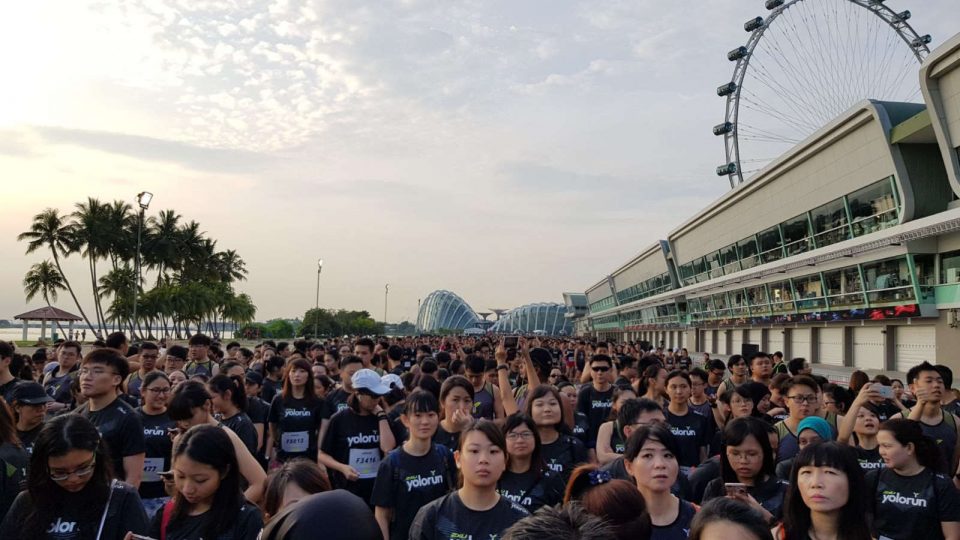“Third time’s the charm” may not be the best word to describe YOLO Run Singapore 2017. In 2015 and 2016, the race has done well with over 3000 and 9000 participants respectively. However, the third edition of YOLO Run SG left much to be desired.
Held on Saturday, 11 November 2017, YOLO Run SG attracted 15,000 participants over three distance categories: 21km, 10km and 5km. In September, the organiser announced the 21KM Alfa Romeo Competizione, where the winners of 21km race will win an Alfa Romeo Giulietta Super worth S$91,000 (without COE) if they can finish below 1:09 (men) and 1:25 (women).
I signed up for 21km, which is scheduled to be flagged off at 5 a.m. from F1 Pit Building.
Race Entry Pack Collection
The Race Entry Pack Collection was held from 3 to 5 November 2017, at Suntec City. I collected my race pack on the last of collection, which is Sunday, 5 November 2017, at around 4.30 p.m. There was a queue, but it moved quite fast. I was able to get to the front within 15 minutes.
During collection, the sports bra was out of stock, and I was given two options: to collect it on the race day or to have it mailed to me. I chose the latter. The sports bra was delivered by courier to my home on Friday, just in time for the race. The size fits me perfectly.
The race pack consisted of a running tee, race bib with timing chip, and a drawstring bag. I have to admit that I like the tee.

Getting to the Race
The shuttle bus to race venue costs S$8. I felt that it’s quite expensive so I delayed purchasing the ticket. When I decided to buy, it was already sold out. So, I had no choice but to take a cab. Fortunately, the uberPOOL that I took cost only S$7, yay!
As I alighted, it was already 4.57 a.m. Worried about being late, I ran to the start pen, only to find that the race has yet to be flagged off. Phew!
Delayed Flag Off
I did some stretching while waiting for the flag off. Five minutes of waiting turned into 15 minutes, then 30 minutes, then 45 minutes. A guy beside me was playing a game with his phone, some people were sitting on the ground, and others tried to kill the time by talking, using phone and standing still. Nobody knew what really happened. I checked YOLO Run SG Facebook account to see if there’s any announcement from the organiser. I found nothing but complaints from runners.
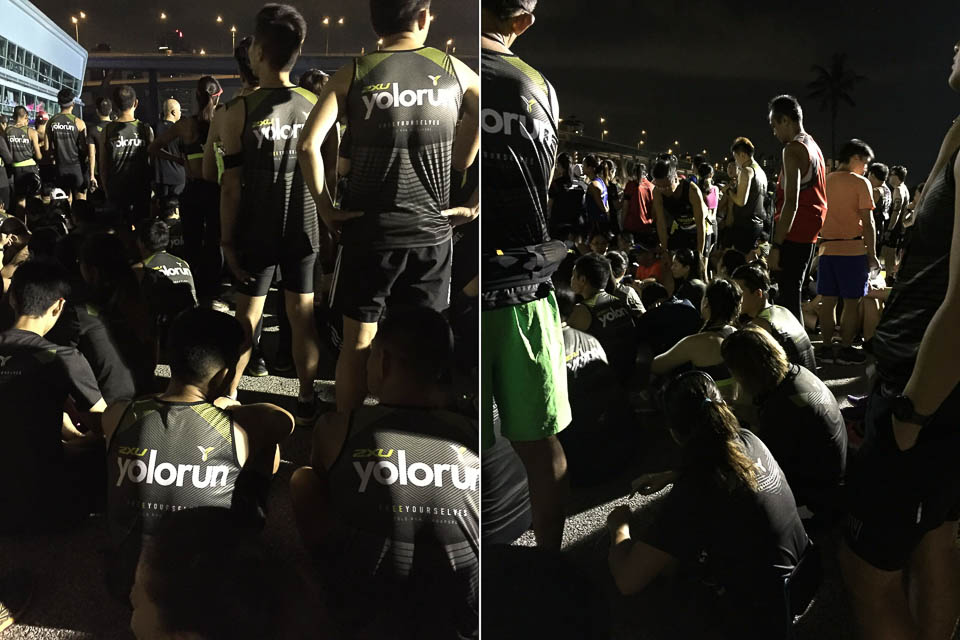
Eventually, at around 5.50 a.m., the emcee announced that 21km runners will be flagged off soon. Then, we were flagged off in waves. I belonged to probably the third wave, which was flagged off at about 6 a.m.
For some people, the 50 – 60 mins waiting time resulted in the bladder being filled up. As a result, several runners ran to the portable toilet as soon as they saw it at 0.5km. Some guys were probably unable to hold it any longer, they decided to pass it in the bushes just beside the portable toilet!
Route
In general, the race route has a lot of room for improvement. Firstly, the total length of the route is more than 21km. The GPS of my watch and phone both show 21.7km at the end of the run.
Secondly, there were many bottlenecks along the route, namely: the bridge at 2.3km, another bridge at 3.3km (at Geylang Road/Kallang Road), the footpath at Old Terminal Lane (it was a narrow footpath with a hydration point, the volunteer insisted that runners run on the footpath and made remarks: Please don’t make my life difficult), the path just after 4km (due to the narrow footpath, many runners including me tried to run on the main road but had to come back because the road led to underground expressway; no marshals were placed at this critical point).
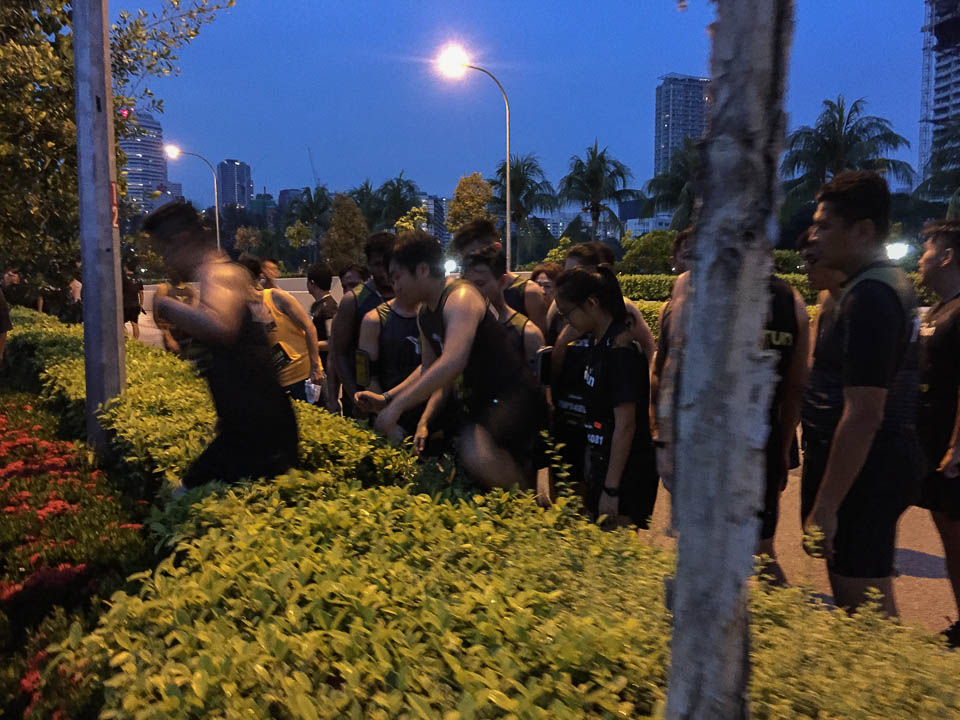
In addition, I also experienced not-so-serious bottlenecks at the underbridge between 4km and 5km (this was a major bottleneck for other runners), footpath at Stadium Place, as well as footpath at Tanjong Rhu Promenade. At these locations, it was still possible to run and overtake runners, but sprinting could be a challenge.
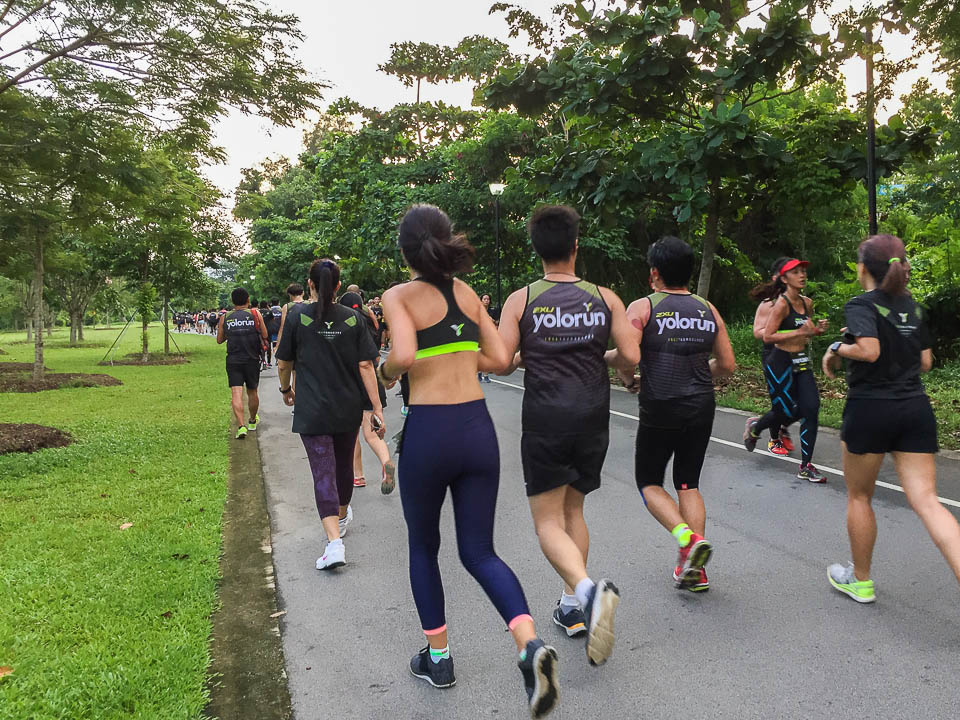
The bottlenecks mostly happened at places where narrow footpaths of less than two metres wide were expected to cater for thousands of runners running in two directions. As runners, we felt that getting road closure permits should have prevented bottlenecks issues. If total road closure is not possible, perhaps the next best alternatives are single lane closure or change of venue.
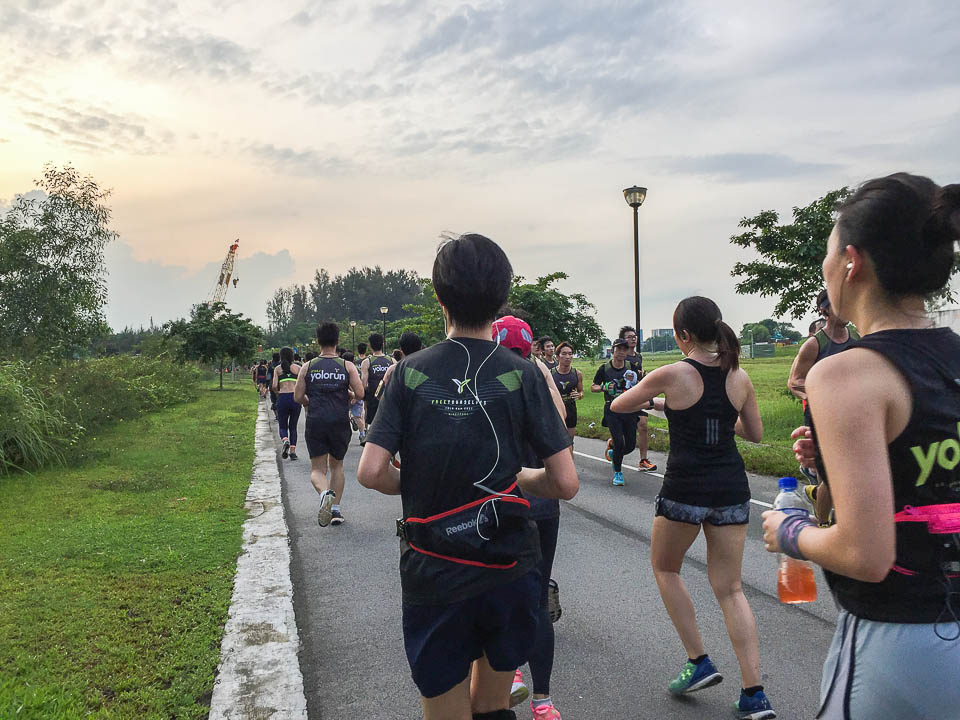
There were two road crossings along the route where we had to stop and wait for the cars to pass. It’s good that the waiting time was less than one minute, as there were traffic controllers.
Hydration Points
The first hydration point at 1.5km wasn’t ready when we ran past. No tables, no cups, no water, only volunteers sitting around with guilty faces. As I wasn’t thirsty yet in the beginning of the run, it didn’t adversely affect me.
The hydration point at 9km was busy when I arrived. There was a short queue of thirsty runners and volunteers were not able to provide water on time. I decided to skip this point and get a drink at the next station. This turned out to be a bad decision.
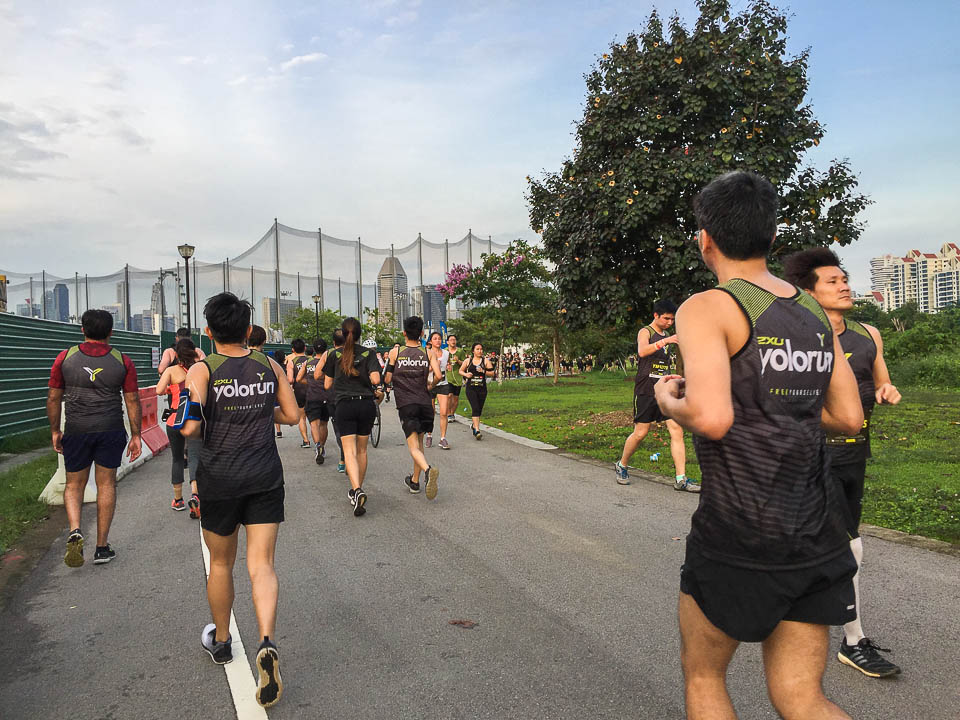
The next hydration point was located at 12km, and there was no more water. A male volunteer apologised to runners, “Sorry, we ran out of water. Please go to the next hydration station.” At that time, the weather was hot and I was very thirsty.
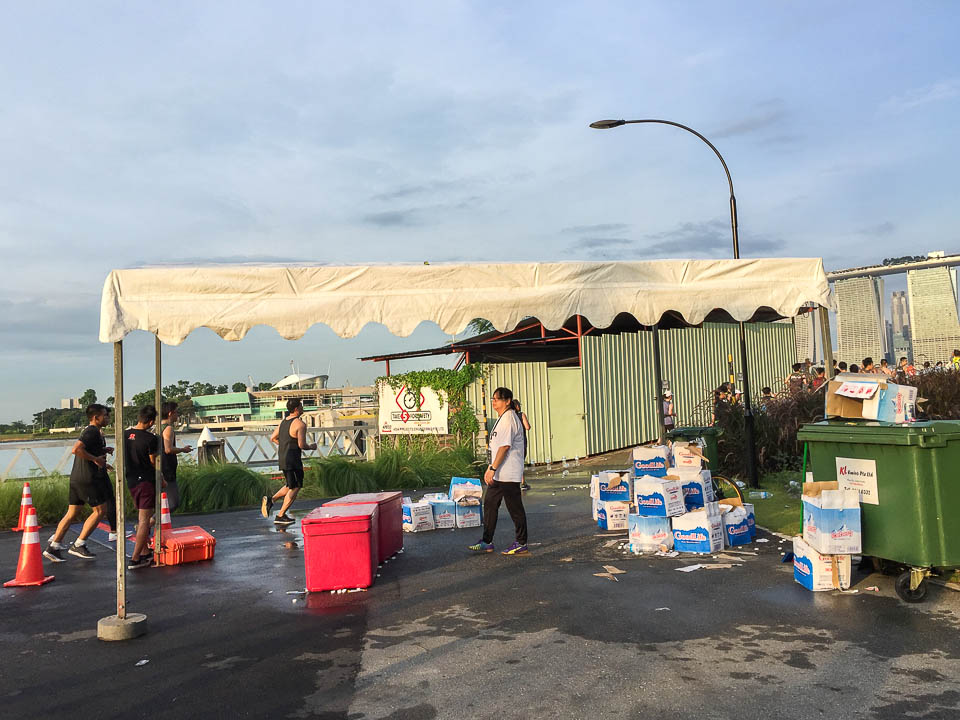
A few metres away from the station, half-consumed mineral water bottles were lining up on a wall. Thirsty runners who were desperate decided to drink from those bottles. Most likely, the volunteers ran out of cups, thus they gave 1.5L mineral water bottles to runners.
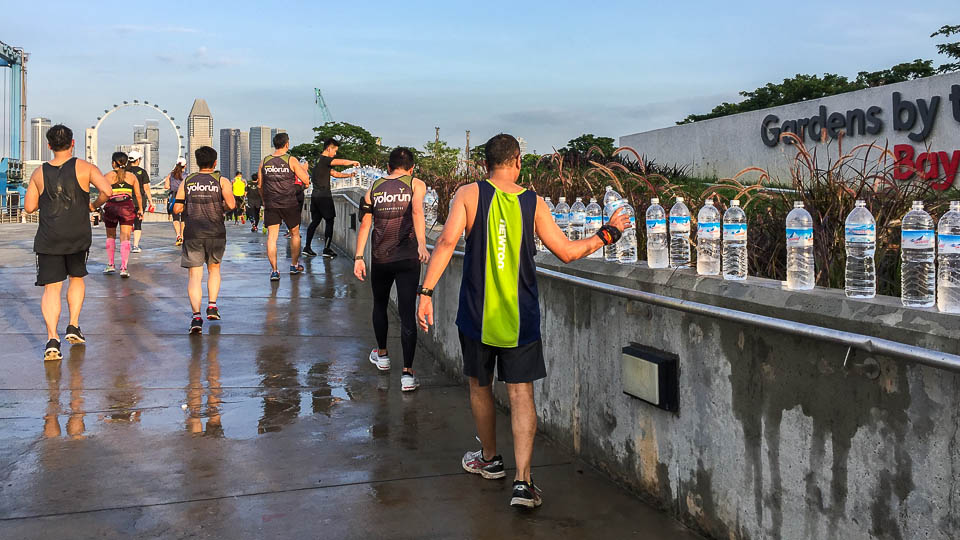
The rest of hydration points were alright and well-stocked. At hydration points with isotonic drinks, I noticed that volunteers poured the drink from Lucozade cans, a process way slower compared to if they were to pour from 1.5L bottles. Also, some hydration points didn’t have proper tables; instead, cups were arranged on top of ice containers. Kudos to volunteers for doing the best they could to hydrate runners.
Minimum Signages, Water Barriers and Safety Cones
Distance markers were not present at every kilometre. Direction signages were not present at every turn. Most of the time, we ran by following the people in front of us, as well as instructions from the road marshals. The water barriers and safety cones that are usually used to mark the route were also lacking.
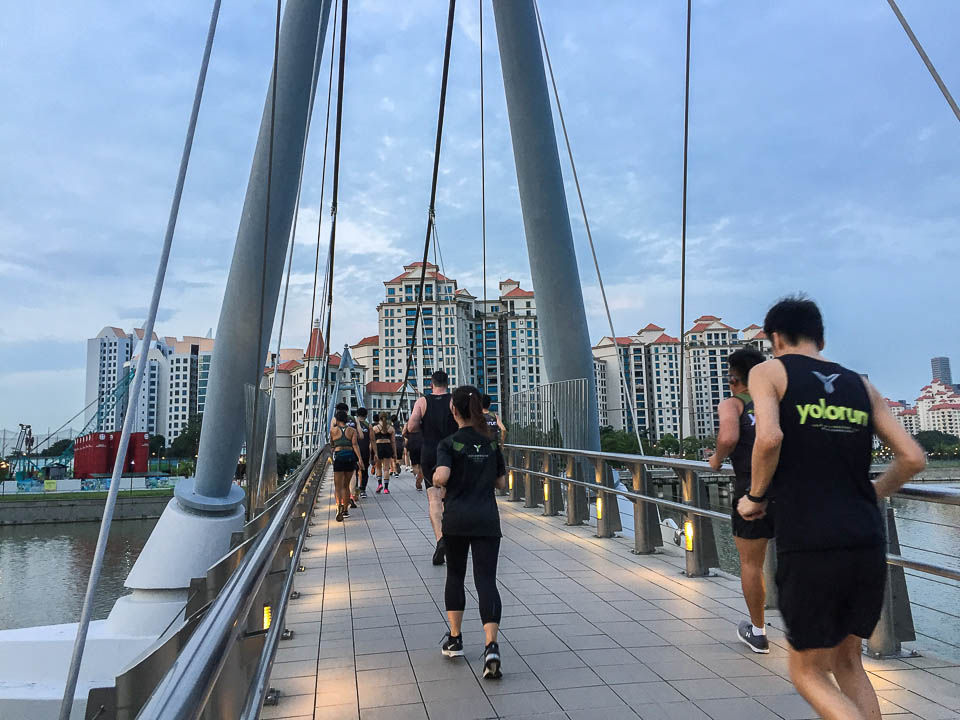
Queue for Medal
I reached the finish line at around 8.50 a.m. and queued for around 10 minutes before I was able to collect my medal, finisher’s tee, banana and isotonic drinks. Luckily the weather was cloudy when I queued, so it was still bearable. The finisher’s tee size wasn’t printed on our race bib even though we’ve chosen our preferred size during registration. I’ve already known my finisher’s tee size prior to the race, so I had no problem getting the correct tee that fits me.
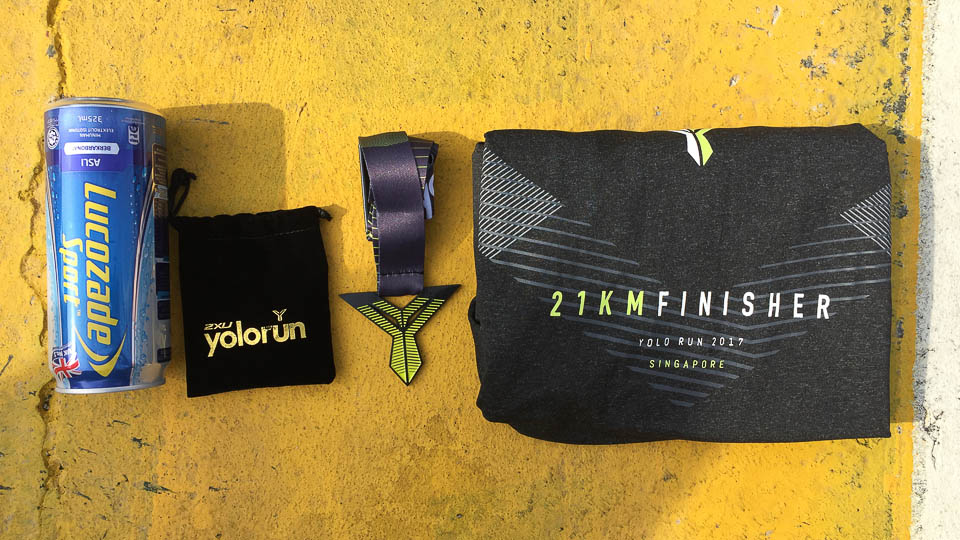
Post-Race
There was a complimentary 15-minute massage for Half Marathoners. I joined the queue for 5 minutes before giving up because the queue moved too slowly.
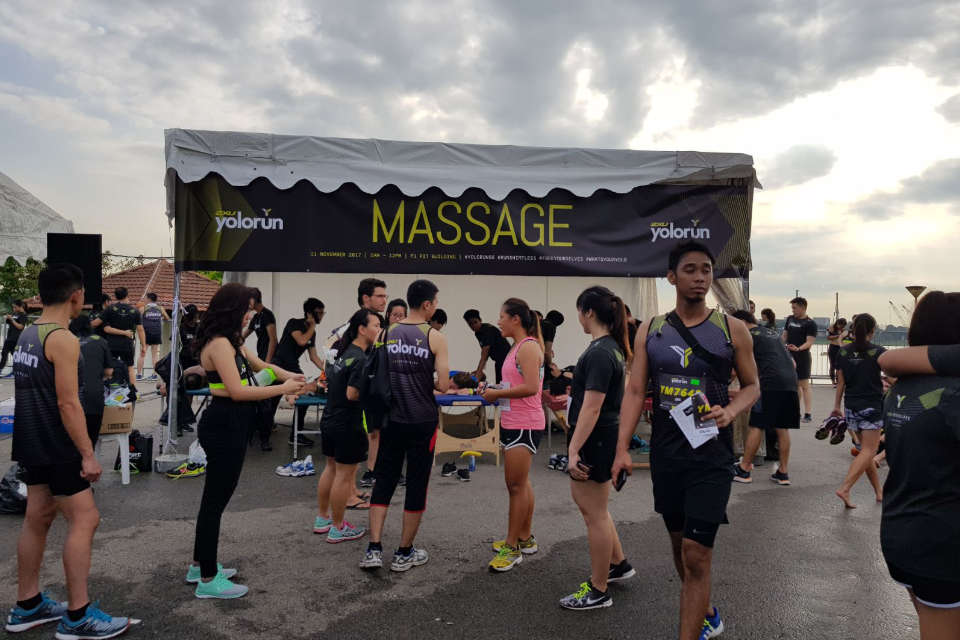
There was a Yoga session for runners at the race village. I wasn’t aware of this programme as the website only mentions about Lead-Up Yoga, not the actual day Yoga. Had I known earlier, I’d probably join!
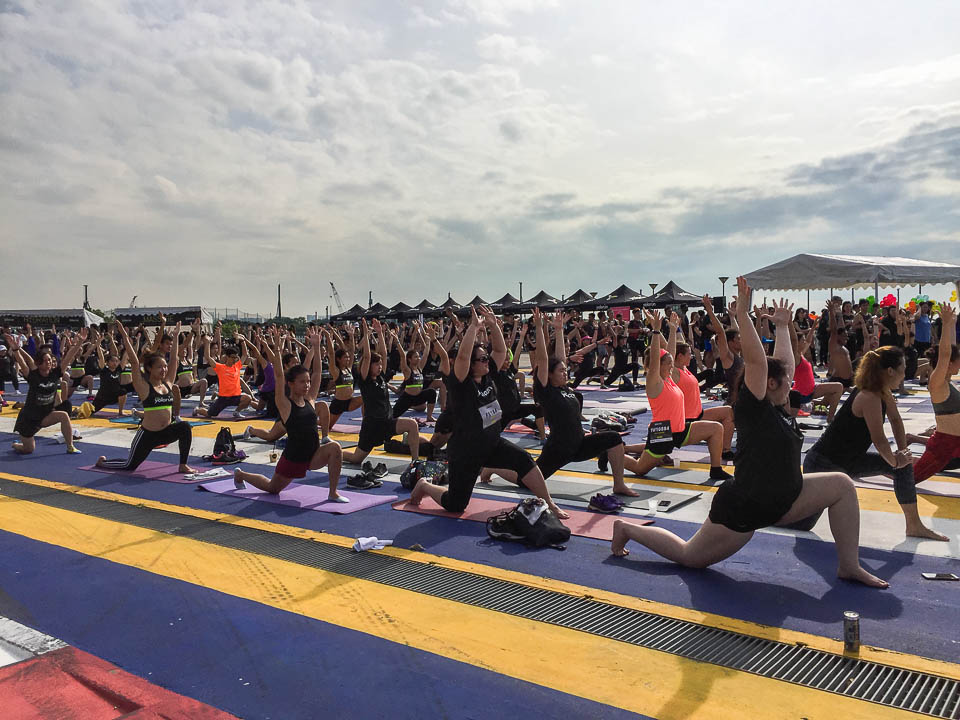
The lucky draw was supposed to be held on stage at 10.45 a.m. Since I finished my run at about 9 a.m. and I didn’t want to spend too much time at race village, I decided not to wait for the lucky draw and go home. It turned out to be a good decision because the lucky draw was cancelled.
Queue for Baggage Collection
I was lucky I didn’t bring any bags for the race, so I wasn’t caught in the baggage collection human jam. Other runners, however, were not so lucky. Some queued for 2 to 4 hours to collect their baggage due to misplaced labels and inadequate storage capacity.
My Takeaway
Even though the race didn’t meet expectations of many runners, including me, I don’t hold any anger towards the organiser. I’m glad I had the chance to run 21km on a beautiful Saturday morning. I’m proud to wear the finisher’s tee and brag that I’ve done a Half Marathon, because I know it’s not easy to come to this point where I’m able to finish Half Marathon without bruises, blisters, chaffing, cramps and tears.
In life, we can’t control the cards we’re dealt with, but we can control our attitude towards the things we can’t control. Runners are a bunch of grateful people. Runners know life is not easy, races are full of obstacles, but no matter what, runners know how to make the most of every day and live life to the fullest.
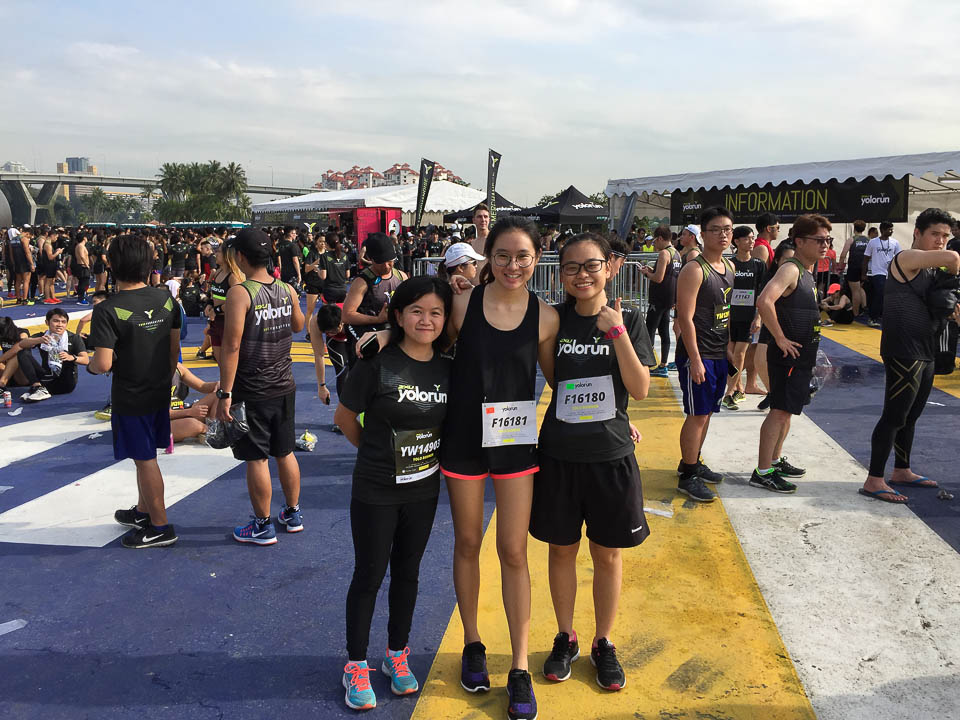
Event Overview
- Many aspects of the race require improvement.
- Despite not winning the car, elite runners won the cash prizes sponsored by the organiser.
- The organiser made a public apology to runners on its Facebook Page and explained briefly that the poorly managed event was caused by unforeseen obstacles along the route.



